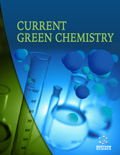
Abstract
Introduction: Dominating use of chemical processes for reducing indigo at several small-scale production houses formed the ground for initiating this study. Conventional textile processing hubs still use sodium hydrosulphite as a reducing agent irrespective of the source of indigo, whether natural or synthetic ignoring the unfavourable consequences of their disposal and elimination from effluent.
Methods: The paper addresses the critical environmental issues related to the conventional reduction of indigo and studies already undertaken. It examines the indigo dyeing process of cotton using natural, chemical and eco-friendly reducing agents in combination with calcium hydroxide for a comparative study. Identification of natural indigo through High-Performance Liquid Chromatography was undertaken for further experimentation. Under specific parameters, the study examined the effect of Thiourea dioxide and natural reducing agents in indigo dyeing replacing Sodium hydrosulphite. The difference in weight, strength, and colour parameters such as K/S (HUNTERLAB), CIELab values and colourfastness are measured. The experimental results showed weight gain in all fabrics after indigo dyeing. There is a decrease in weft strength only in tamarind, iron, jaggery and dextrose vats. Iron vat showed a higher colour yield out of all reducing agents due to forming metal complexes with the cotton fabric, which influenced colour depth and highest relative colour strength % (114.11) and ΔC (8.48).
Results: Thiourea dioxide showed the next highest relative colour strength % (96.59) and lowest ΔH values (8.54) concerning the values of the hydro process. Structural changes of fiber were studied by using SEM (Scanning Electron Microscope) after using different reducing agents, which revealed superior surface topography of samples dyed using thiox. The colour difference showed no significant effect on the colourfastness of alternative reducing agents.
Conclusion: Thiox can be a perfect substitution for hydro in indigo dyeing as it was found practical and feasible for implementation even by small-scale units in India.
Keywords: Indigo dyeing, natural reducing agents, eco-friendly reduction, identification of natural indigo, thiourea dioxide, spectrophotometer.
[http://dx.doi.org/10.1016/S0143-7208(03)00108-6]
[http://dx.doi.org/10.1016/j.dyepig.2009.03.008]
[http://dx.doi.org/10.1016/j.dyepig.2020.108570]
[http://dx.doi.org/10.1016/j.jclepro.2018.06.199]
[http://dx.doi.org/10.1111/j.1478-4408.2009.00197.x]
[http://dx.doi.org/10.1038/s41598-020-61795-5] [PMID: 32188868]
[http://dx.doi.org/10.5772/intechopen.93161]
[http://dx.doi.org/10.1016/j.jclepro.2021.129615]
[http://dx.doi.org/10.1177/004051757004000402]
[http://dx.doi.org/10.1070/RC2001v070n10ABEH000659]
[http://dx.doi.org/10.1016/j.dyepig.2019.107882]
[http://dx.doi.org/10.1023/A:1020198116170]
[http://dx.doi.org/10.1149/1.1521757]
[http://dx.doi.org/10.1016/j.dyepig.2004.01.005]
[http://dx.doi.org/10.1016/S0009-2509(96)00497-6]
[http://dx.doi.org/10.1111/j.1478-4408.2007.00082.x]
[http://dx.doi.org/10.1016/j.dyepig.2006.05.041]
[http://dx.doi.org/10.1016/j.firesaf.2017.06.005]
[http://dx.doi.org/10.1016/j.jclepro.2011.11.062]
[http://dx.doi.org/10.1016/j.jclepro.2009.08.004]
[http://dx.doi.org/10.1111/j.1478-4408.2000.tb00002.x]
[http://dx.doi.org/10.1007/s12355-014-0328-z]
[http://dx.doi.org/10.1007/s12221-013-2027-x]
[http://dx.doi.org/10.5805/KSCI.2011.13.2.263]
[http://dx.doi.org/10.2298/CICEQ130507028B]
[http://dx.doi.org/10.1111/j.1478-4408.2000.tb00044.x]
[http://dx.doi.org/10.3390/su13073686]
 11
11 3
3

















